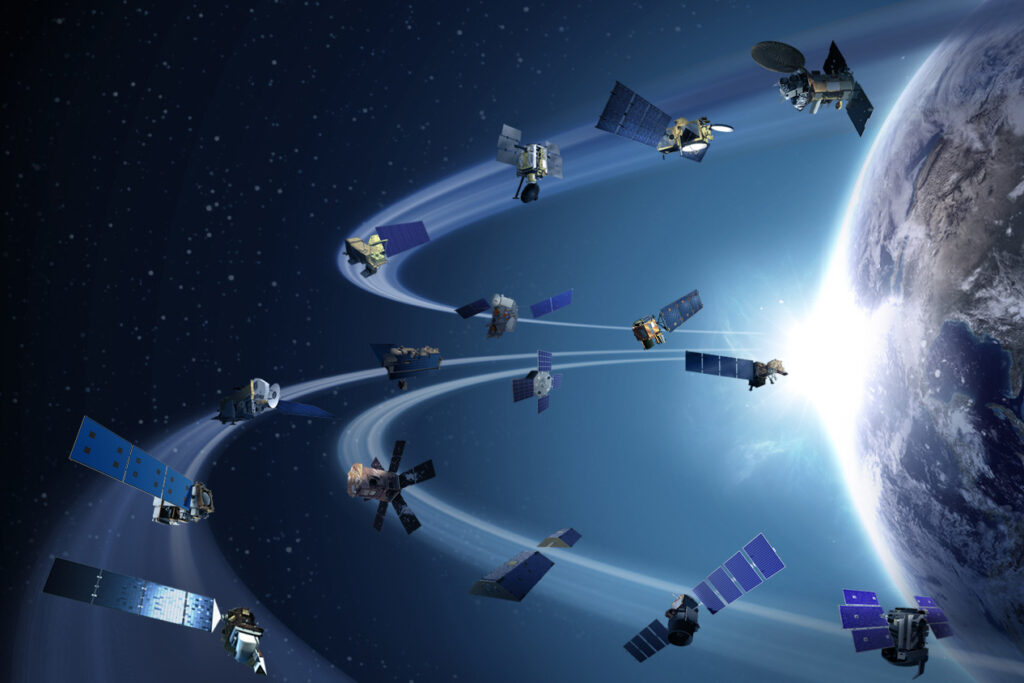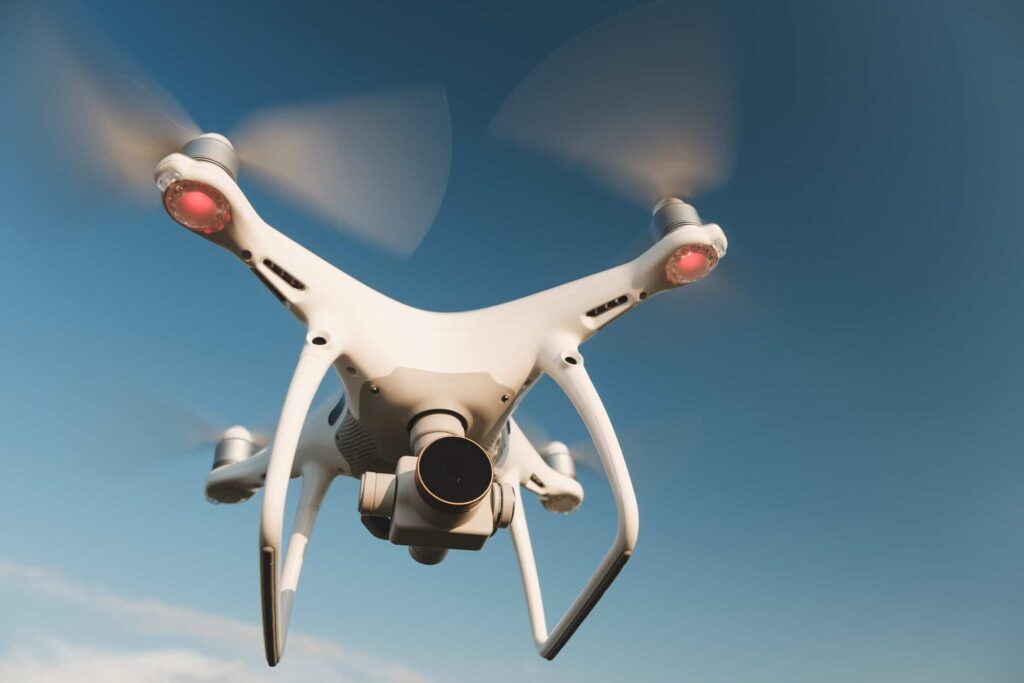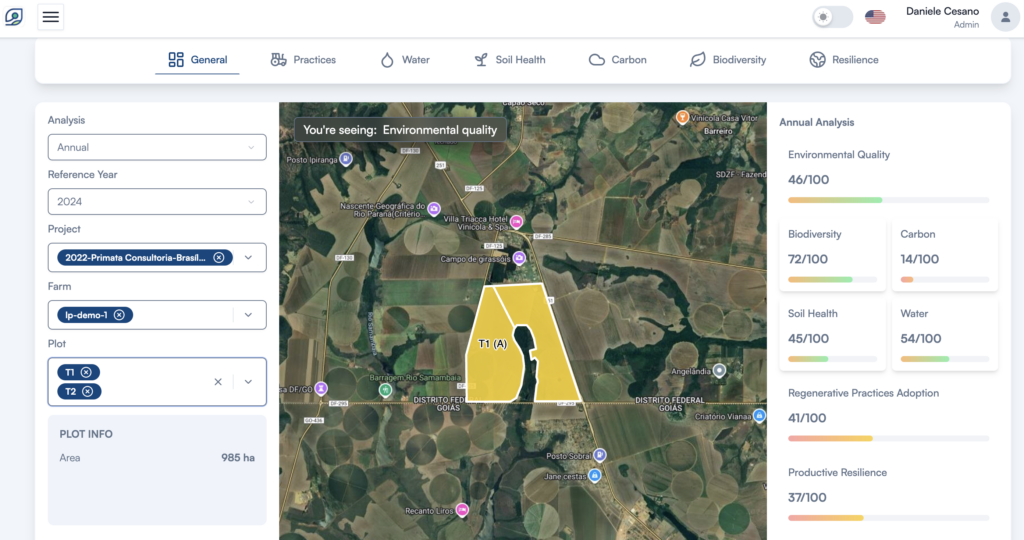Sustainability is at the forefront of modern agricultural and environmental practices, with the need for transparent and accurate tracking of environmental impact becoming more critical. Two key systems that help organizations measure and verify these impacts are Certification and dMRV (digital Monitoring, Reporting, and Verification). These systems serve different yet complementary purposes, and platforms like LandPrint are emerging as innovative solutions to bridge the gap between traditional certification and advanced digital monitoring.

By Daniele Cesano, CEO LandPrint
Certification
dMRV (digital Monitoring Reporting and Verification)
Certification refers to a third-party verification process that ensures a product, service, or system meets established industry standards. The big advantage of certification system is that the buyer of certified products delegates independent certification bodies to assess products through periodic audits and checks, ensuring adherence to guidelines and focusing on compliance with these standards, such as organic and regenerative certification or fair trade practices. This process is usually based on best practices and less on measurements and outcomes. The veracity of the system is enabled by the credibility of the certifying organization and the rigor of the standard-setting and verification process
However, certification often focuses on the label and follows rigid standards, providing only a periodic snapshot. There is no real-time indication, and data usually is not stored in centralized databases or used beyond the certification. This means that the company or the farmer could end up loosing or nor reusing part of the information. Often, the information that is used to certify a producer or a supply chain may not be detailed and specific enough to be reused for environmental crediting purposes, generating additional costs for issuing carbon or biodiversity credits, for example. In addition, end users or consumers often lack a clear understanding of what the certification represents, as the label typically appears without any accompanying explanatory details. Unless they actively seek out additional information on related websites, the meaning and significance of the certification may remain unclear. As a result of all this, it is partially useful for ESG reporting or C-level decision-making and continuous environmental monitoring.
dMRV systems rely on objective, quantitative observations of specific environmental attributes or practices. They use digital tools—such as sensors, satellite imagery, lab analysis, and data analytics—to continuously monitor and report environmental and agricultural outcomes in real time. These systems are designed to quantify impacts and track the adoption of practices that can be measured remotely or on-site with digital technologies. Continuous data collection makes dMRV essential for organizations monitoring activities like carbon sequestration, biodiversity conservation, soil health, and water management.
dMRV provides automated, high-precision measurements that allow for real-time tracking of environmental performance. It streamlines data collection and reporting, reducing human error and improving efficiency. By leveraging digital technology, dMRV minimizes manual labor and enhances the accuracy of environmental insights. This precision is particularly valuable in carbon and biodiversity markets, where accurate data on emissions and sequestration are critical for transparency and accountability. In addition, often the parameters that are used in dMRV system are accurate enough to be used in certification systems.
One of the main downsides of dMRV systems is that they are highly technical, requiring users to have a certain level of technical proficiency to fully understand the data and make informed decisions based on the information provided. This complexity can be a barrier for some users, particularly those without specialized knowledge in data analytics or environmental metrics, limiting accessibility and ease of use.

Key Differences Between Certification and dMRV
While certification and dMRV serve related purposes, they differ significantly in several key areas:
1. Frequency & Data Collection: Certification occurs periodically (e.g., annually), providing a static snapshot of compliance at a given time. dMRV, on the other hand, collects real-time or near-real-time data, offering dynamic monitoring and enabling continuous adjustments based on ongoing observations.
2. Verification Process: Certification relies on scheduled external audits, making it more rigid and less responsive to real-time changes. dMRV leverages continuous or more regular on-demand data collection and dynamic verification, creating a more flexible and adaptive approach that adjusts in real time as environmental conditions evolve.
3. Scope: Certification is typically limited to ensuring compliance with a specific set of pre-defined standards. In contrast, dMRV can track a broader array of environmental indicators, such as carbon emissions, biodiversity, soil health, and water management, making it more versatile and better suited to addressing evolving sustainability challenges and support dynamic decision making systems.
4. Data Centralization and Homogeneity: Certification processes focus on adherence to specific criteria, but the data collected to prove compliance is often not homogeneously gathered, nor is it typically centralized in databases. This lack of standardization and centralization poses a serious limitation when trying to use diverse datasets for benchmarking or conducting in-depth analytics. In contrast, dMRV systems offer centralized data storage and analysis, ensuring that all data is collected according to predefined standards, enabling deeper insights and more effective comparisons.
5. Differentiated Responsibilities: Certification mechanisms provide the advantage of shifting the responsibility for sustainability declarations to an external body, which is often well-respected and employs third-party verifiers to ensure compliance with its standards. On the other hand, dMRV systems require companies or producers to take ownership of their data collection and analysis, and to develop the technical proficiency needed to effectively use the data. This shift in responsibility places more accountability on the organization but also offers greater control and flexibility in managing their sustainability efforts.
6. Complementary Roles: dMRV can provide data inputs that support certification processes, offering real-time insights that enhance the accuracy and relevance of certifications. However, certification may not provide inputs to dMRV, highlighting the complementary but distinct roles these systems play.
Table 1. Difference between certifications and dMRV systems.
| Certification schemes | dMRV |
| Focus on the label | Focus on the measurement and indicators |
| Way to delegate responsibility to supplier or verifier | Direct measurement of suppliers’ performance |
| Usually not usable for environmental credits (ie carbon and biodiversity) | It can be credits & certification aligned |
| Focus more on practices than environmental stocks and impacts | It measures environmental stocks, impacts and some practices |
| Rigid standard | Adaptable to different criteria and measurement protocols. The flexibility can generate uncertainty depending on the rigour |
| It provide similar results using different datasets collected in different way as it is a more descrete asessment | It can give different results depending on the measurement methodology and data source |
| It depends on third party auditing | Auditing may be optional especially if the measurement is fully automatized |
| No real-time indication | Real-time indication on some parameters |
| Data not stored in central databased and reused | Data stored in centralized databases and reused several times |
| Difficult to scale accross large areas rapidly | Easy to scale accross large areas rapidly, especially with the remote measurements. |
Where LandPrint Fits In
LandPrint operates at the core of the dMRV ecosystem, offering both regular measurements and real-time data generation to track environmental impacts. By leveraging advanced technologies such as remote sensing and lab analysis, LandPrint provides detailed insights into agricultural practices, continuously monitoring key sustainability metrics like carbon sequestration, water usage, soil health, and biodiversity.

What sets the LandPrint system apart are its unique features:
1. Environmental Ratings (LandPrint Rating): Based on the concept of “maximum potential,” this proprietary rating system shows a farm or supply chain’s progress on its regenerative journey. The LandPrint rating offers a simplified index that helps both farmers and C-level executives understand their standing and make informed decisions.
2. Customized Flexibility and Evolution: The LandPrint platform is designed to evolve with your needs. We offer the flexibility to include additional indicators as required, supported by a rigorous method for selecting indicators and measurement protocols.
3. Integrity: At its core, the LandPrint platform prioritizes integrity. Every aspect—from our indicators to our measurement protocols—has been engineered to ensure verifiability, scalability, accuracy, flexibility, and transparency.
4. Independence: Our goal is to empower organizations by making them independent in data generation and analysis. Through our SaaS platform, companies can develop their own data strategies and business intelligence using cutting-edge data science.
5. Data Monetization: LandPrint helps farmers, landowners and companies monetize their data in various ways, including generating evidence for Payment for Ecosystem Services (PES), supporting sustainable sourcing for higher-value products, verify the impacts of outcome-based and blended finance mechanisms, facilitating carbon insetting and offsetting programs, and quantifying environmental investment risks in degraded assets.
In future blogs, we will dive deeper into these aspects and explore how they can drive value for your sustainability efforts. Stay tuned!